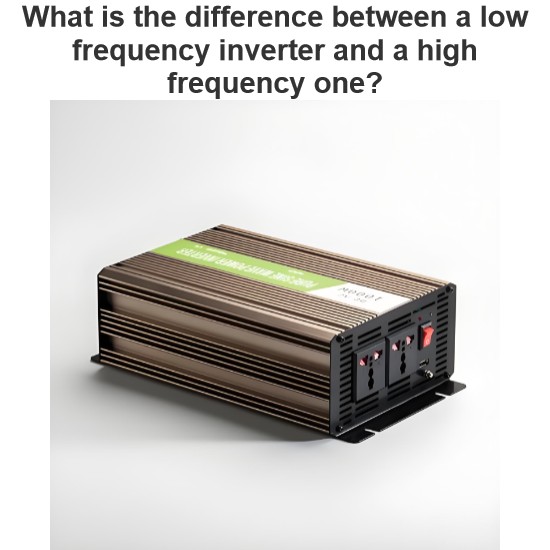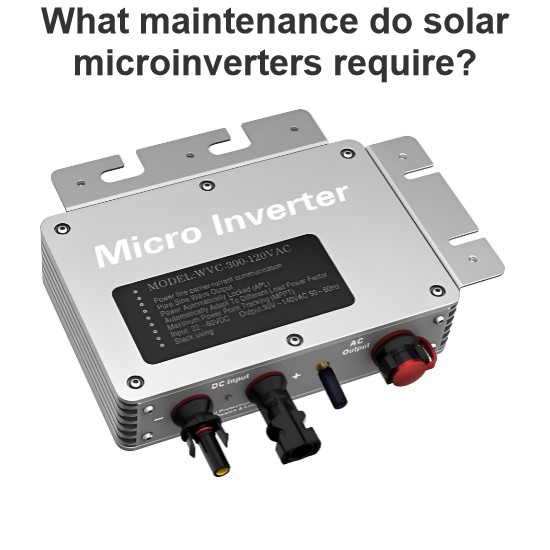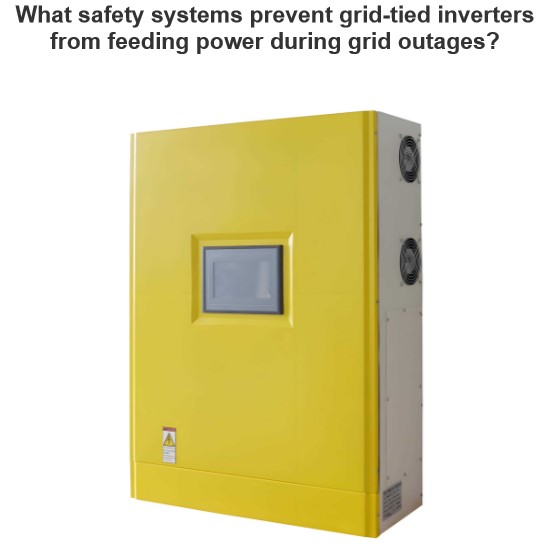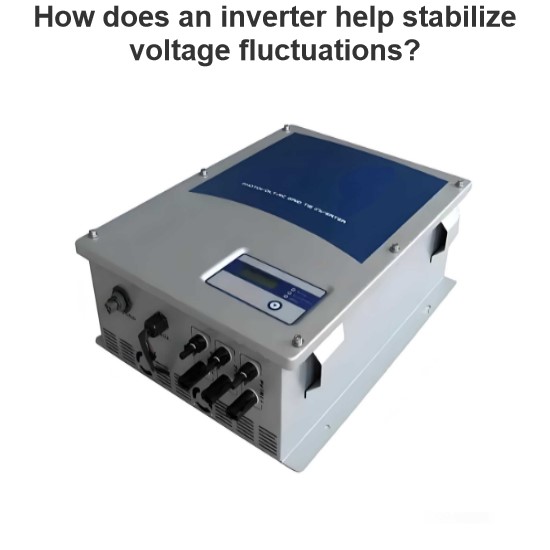Operating Principles of Grid-Connected Inverters
I. Operating Principles of Grid-Connected Inverters
Grid-connected inverters are devices that convert direct current (DC) to alternating current (AC) and are widely used in solar photovoltaic (PV) power generation systems. The operating principles involve several aspects:
Energy Conversion Process:Under sunlight, PV panels generate DC electricity. For small and medium-sized grid-connected inverters, a two-stage structure is often used, where the DC output from the PV panels is first converted through a DC/DC converter for preliminary conversion, and then through a DC/AC converter to produce AC. Large inverters typically use a single-stage structure for direct conversion. During operation, the inverter controls the three-phase inverter module by detecting DC voltage, current, and grid AC voltage and current. The digital control system generates PWM (Pulse Width Modulation) drive signals, making the inverter produce AC that is synchronized in frequency and phase with the grid. For example, when the DC electricity from the PV panels enters the grid-connected inverter, it first passes through a rectifier (if the two-stage structure includes a rectification function), converting any existing AC to DC, and then through the inverter section's electronic components to convert DC to AC, which is ultimately supplied to household or industrial loads or fed into the grid.
Key Components and Their Functions:
Rectifier: In some structures, it is responsible for converting AC to DC, ensuring that the input to the subsequent inverter part is DC.
Inverter: This is the core component, using electronic elements (such as power semiconductor devices) to convert DC to AC.
Controller: It controls the entire conversion process, including monitoring input and output voltages and currents, and adjusting the PWM drive signals based on these parameters to ensure the output AC meets the required standards.
Output Terminal: It outputs the converted AC to the grid or load.
II. Relationship Between Grid-Connected Inverters and the Grid
Power Transmission and Interaction:The primary function of a grid-connected inverter is to convert DC to AC and connect to the grid, enabling power transmission. It can feed the electricity generated by the PV system into the grid, meeting the power needs of other users. In this process, the grid acts as a large energy storage and distribution center, and the grid-connected inverter serves as the bridge connecting distributed PV power to this center. For example, in distributed PV projects, many households with PV systems sell excess power to the grid via grid-connected inverters, achieving bidirectional power flow—both receiving and supplying power to the grid.
From the grid's perspective, as more grid-connected inverters are integrated, the sources of grid power become more diverse. However, this also places new demands on grid stability and power quality.
Control and Adaptation:Currently, grid-connected inverters mainly operate in two basic control modes: current control and voltage control. In current control mode, the inverter aims to control the output current and must adapt to changes in grid voltage and other parameters. For example, in weak grids (high impedance, weak framework, low resistance to surge currents), the inverter needs to have strong adaptability to high-impedance grids to avoid resonance phenomena that could lead to fault escalation. Different manufacturers' inverters use various algorithms and control mechanisms to adapt to grid changes, such as intelligent active damping suppression algorithms to address resonance issues in weak grids, and strategies like repetitive control, dynamic PI parameters, specific harmonic suppression, and dead-time compensation.
In voltage control mode, the inverter targets voltage control, making the external characteristics of the grid-connected inverter behave as a controlled voltage source, capable of providing support for voltage and frequency. This is particularly suitable for high-penetration renewable energy grid connections, meaning the inverter can, to some extent, regulate the grid's voltage and frequency to maintain stable operation.
III. Can Grid-Connected Inverters Operate Without the Grid?
Under Normal Circumstances, Operation is Not Allowed:According to relevant standards and safety regulations, grid-connected inverters are typically equipped with anti-islanding devices. When the grid voltage is zero, the inverter will stop working. This is because if the inverter continues to operate during a power outage, it may pose a safety threat to maintenance personnel. For example, if the PV system continues to supply power to the grid through the inverter during a power outage, it can easily cause electric shock and other safety incidents. Therefore, national standards stipulate that PV grid-connected inverters must have islanding detection and control functions, and they must stop operating when the grid is not available.
Operation Under Special Modifications:Theoretically, without modifying the software or hardware, an off-grid inverter could be used to "simulate" a grid, making the PV inverter believe that the grid is normal, thus allowing it to supply power to this "grid." However, this method carries risks and does not comply with normal safety and regulatory requirements. Additionally, if the grid-connected inverter is modified to enable off-grid operation, such as in some hybrid grid-tied and off-grid inverters, it can switch to off-grid mode when the grid is down. This, however, is no longer a function of a pure grid-connected inverter but rather a result of special design and modification.
IV. Essential Conditions for Grid-Connected Inverter Operation
Technical Conditions:
Frequency Synchronization: The grid frequency is typically 50Hz or 60Hz in most regions. The AC frequency output by the inverter must be synchronized with this. This is usually achieved through technologies like Phase-Locked Loops (PLLs) to ensure the inverter's AC frequency matches the grid frequency, otherwise, it cannot operate normally.
Phase Synchronization: In addition to frequency synchronization, the inverter's AC output must also be synchronized in phase with the grid voltage. Phase synchronization is achieved through related control technologies. Only with phase synchronization can the inverter's output energy be smoothly integrated into the grid without causing adverse effects such as power fluctuations and decreased power quality.
Voltage Matching: The inverter's output voltage must match the grid voltage at the point of connection. Although inverters are usually designed to adapt to different voltage levels, it must ensure operation within safe limits. If the voltage does not match, it may prevent normal power transmission and even damage the inverter or grid equipment.
Harmonic Limitations: During the conversion of DC to AC, the inverter may generate harmonics, which can affect the grid, such as causing voltage distortion and affecting the normal operation of other electrical equipment. Therefore, inverters must meet certain harmonic limitation standards to ensure power quality. For example, the inverter's output current should not contain a DC component, and high-order harmonics in the inverter's output current must be minimized to avoid polluting the grid.
Reactive Power Control: The inverter must be able to control reactive power output to support grid voltage stability. In grids with a high proportion of renewable energy, reactive power control is particularly important. By controlling reactive power, the grid's voltage level can be regulated, enhancing grid stability and power quality.
Islanding Effect Protection: When the grid is down, the inverter must quickly disconnect from the grid to prevent it from supplying power to the disconnected grid, thus protecting maintenance personnel. This is one of the essential safety functions of grid-connected inverters.
Safety Conditions:
Electrical Safety: The inverter and its installation must comply with relevant electrical safety standards, including insulation, overload protection, and short-circuit protection. For example, the inverter's electrical insulation performance must be good to prevent leakage; in case of overload or short circuit, the inverter should activate protective mechanisms to prevent equipment damage and potential fires.
Protection Rating: The inverter needs a certain protection rating to resist environmental factors such as dust and moisture. Outdoor inverters typically require a higher protection rating, such as IP65. The protection rating ensures that the inverter can operate normally under different environmental conditions and extends its service life.
Regulations and Standards:
National and Industry Standards: Grid-connected inverters must comply with national and industry-related standards, such as China's GB/T 37408 - 2019 standard, which specifies technical requirements for PV grid-connected inverters. These standards cover multiple aspects, including performance, safety, and power quality, ensuring that inverters meet regulations when operating on the grid.
Permits and Approvals: The installation and operation of grid-connected inverters may require permits and approvals from the power department to ensure they do not adversely affect the grid. The power department will review the inverter's installation location, capacity, and technical parameters, and only after approval can the inverter be connected to the grid.
Economic Factors:
Return on Investment (ROI): Users or companies considering grid-connected inverters will evaluate the ROI, including initial investment costs, operational and maintenance expenses, and potential policy subsidies or revenue from selling electricity. If the ROI is not favorable, it may affect the enthusiasm for grid-connected inverters. For example, if the initial investment cost is high and the selling price of electricity is low without sufficient subsidy policies, investors may be deterred.
Subsidy Policies: Different regions may have different subsidy policies, which can affect the economic feasibility of grid-connected inverter projects. Some regions offer subsidies to encourage the development of renewable energy, including subsidies for purchasing inverters and feed-in tariffs, which help improve the economic benefits of grid-connected inverter projects.
System Compatibility:
Grid Compatibility: The inverter must be compatible with the existing grid system, including the grid's structure, scale, and operational characteristics. Different grid structures (e.g., TT, IT, and TN power systems) and scales (e.g., low-voltage and high-voltage grids) have different requirements for inverters, and the inverter must be able to adapt to these differences to achieve stable grid connection.
Equipment Compatibility: The inverter must be well-matched with the connected power generation equipment (e.g., solar panels, wind turbines) to achieve efficient power conversion. For example, the output power and voltage of solar panels must match the inverter's input requirements to ensure the efficiency and performance of the entire generation system.
Environmental Factors:
Environmental Adaptability: The inverter must be able to adapt to the environmental conditions of the installation site, such as temperature and humidity, to ensure long-term stable operation. For example, in high-temperature environments, the inverter's heat dissipation performance must be good to prevent damage from overheating; in high-humidity environments, the inverter must have moisture-resistant properties to avoid internal circuit short circuits.
Environmental Impact: The design and operation of the inverter must consider its impact on the environment, such as noise and electromagnetic interference. Efforts should be made to minimize the noise generated during inverter operation to avoid noise pollution, and electromagnetic interference should be controlled to prevent interference with other electronic devices.
Operation and Maintenance:
User Interface: The inverter should provide an intuitive user interface for monitoring system status and performing necessary settings. For example, users can view the inverter's operational parameters (e.g., input/output voltage, current, power) and fault alarm information through the interface, and perform basic settings (e.g., power limits, operating mode selection).
Maintenance Requirements: The maintenance of the inverter must consider ease of maintenance, maintenance costs, and maintenance cycles. An inverter that is easy to maintain can reduce maintenance costs and difficulty, while a reasonable maintenance cycle can ensure long-term stable operation. For example, the internal structure of the inverter should be designed to facilitate inspection by maintenance personnel, and the lifespan and replacement costs of its components should be reasonable.
V. The Role of the Grid in Grid-Connected Inverter Operation
Providing Reference for Operation:The grid's voltage, frequency, and other parameters provide a reference standard for the operation of grid-connected inverters. The inverter needs to adjust its output based on the grid's voltage and frequency to match these parameters. For example, the inverter uses technologies like PLL to synchronize the frequency and phase of its output AC with the grid and match the voltage, ensuring smooth integration of power into the grid. Without the grid providing these references, the inverter would be unable to accurately adjust its output, and normal grid connection would not be possible.
Enabling Power Transmission and Distribution:The grid provides a platform for the transmission and distribution of power from grid-connected inverters. After the inverter feeds the AC power generated by the PV system into the grid, the grid can transmit this power to where it is needed, achieving widespread distribution. This allows PV power to integrate into the broader power system, providing electricity to more users. The scale and structure of the grid also influence the inverter's connection methods and operational requirements. For example, in different voltage-level grids (e.g., low-voltage and high-voltage grids), the inverter must meet the corresponding access standards and technical requirements to ensure safe and efficient power transmission.
Ensuring Stable Operation:In the grid, numerous power generation and consumption devices are interconnected, forming a large power system. This system has a certain degree of stability and inertia, which helps stabilize the operation of grid-connected inverters. For example, when the output power of a PV system fluctuates, the grid can balance these fluctuations through its own regulation mechanisms (e.g., adjusting the power output of other generation devices), thereby reducing the impact on the inverter. Additionally, the grid provides short-circuit protection and other safety features. If a short-circuit fault occurs at the inverter's output, the grid's protection devices will act to prevent the fault from escalating, protecting the inverter and other equipment.
Blake is an electrical engineering leader with 20+ years of expertise in imaging technology innovation. Former CTO of a global scientific camera manufacturer, he now drives strategic R&D and CCD-to-CMOS transitions at Jingtu Optoelectronics. His career combines technical excellence in precision instrumentation with cross-disciplinary team leadership across global markets.













